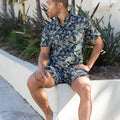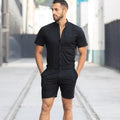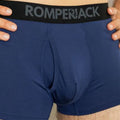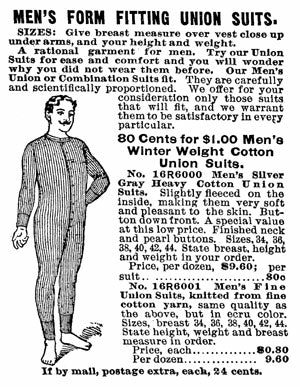Union suits surprisingly originated not as the comic long underwear we often picture, but as a practical women's undergarment during the Victorian era. Initially designed as "emancipation garments" to free women from restrictive corsets, these one-piece wonders eventually crossed gender lines to become workwear staples for men. Historical union suits evolved from scratchy wool necessities to comfortable cotton blends, transforming from purely functional thermal underwear to fashion statements. Despite their humble beginnings, modern union suits have experienced a remarkable revival, with contemporary union suit brands reimagining the classic design for today's comfort-seeking consumers. From their button-up fronts to the infamous "drop seat" rear flaps, these full-body undergarments tell a fascinating story of American practicality and ingenuity.
The Birth of the Union Suit in Victorian America
Victorian fashion imposed enormous physical burdens on women throughout much of the 19th century. The restrictive clothing culture that dominated this era would ultimately spark a reform movement that gave birth to one of America's most practical garments—the union suit.
Why Victorian women needed reform garments
Fashion in Queen Victoria's reign (1837-1901) sacrificed comfort and health for social appearance. Victorian ladies commonly wore up to 13 pieces of underwear simultaneously, creating a staggering weight of 7-10 pounds of fabric. This excessive layering wasn't merely uncomfortable—it actively restricted movement and contributed to various health problems.
At the center of controversy stood the corset, which crafted flesh into "class-appropriate contours" by hiding abdominal bulges and creating the prized small waist that supposedly indicated good breeding. Most corsets sold between 1860 and 1910 measured just 20-22 inches around, requiring tight lacing that compressed internal organs.
The medical community recognized numerous health consequences from these constrictive garments:
· "Chicken Breast," where extreme pressure forced ribs to turn inward and overlap the sternum
· Compression of the lungs and decreased oxygen to the blood
· Disrupted digestion and organ displacement
· Uterine damage from prolonged pressure
Furthermore, the many skirt layers created excessive bulk at the waist, with the weight unevenly distributed across a woman's body. Even after the invention of the cage crinoline, which reduced the number of petticoats, women struggled with clothing that was "too hot in the summer and not warm enough in the winter."
Many progressive women recognized how these clothing practices physically prevented them from fully participating in society. While men moved freely through their days and decision-making roles, women remained literally caged by fashion constraints—a reality that dress reformers likened to a type of enslavement.
The invention of the 'emancipation union under flannel'
The first significant breakthrough came in 1868 with the patenting of the "emancipation union under flannel". This revolutionary garment combined a knit flannel waist (shirt) and drawers (leggings) in one piece, eliminating the need for restrictive corsets. The design extended to the ankles, which notably removed the requirement for long stockings and uncomfortable garters.
Susan Taylor Converse of Woburn, Massachusetts, advanced this concept significantly in 1875 by designing an improved version called the "Emancipation Suit". Her innovation featured a gathered section across the bodice that freed the breasts from compression, along with strategic sets of buttons at the waist and hips that helped suspend several layers of skirts. This eliminated the need for heavy petticoats that often weighed upwards of 15 pounds.
The New England Women's Club became one of the earliest organizations to champion undergarment reform, with its dress-reform committee endorsing Converse's design. In 1873, this committee, headed by Abba Goold Woolson, organized a series of lectures on the hazards of fashionable dress delivered by four prominent female physicians. These lectures were subsequently published in 1874 as "Dress Reform," bringing greater awareness to the movement.
Although initially designed for women, the union suit would soon cross gender boundaries. The practical, single-piece undergarment solved problems of movement, temperature regulation, and health that appealed to both sexes, though for different reasons.
This reform undergarment represented more than just a fashion evolution—it symbolized women's emancipation from physically restricting clothing that had limited their participation in society for generations. The union suit emerged as a practical solution that addressed both health concerns and the growing call for women's equality in late Victorian America.
Union Suits and the Rise of Practical Fashion
What began as a women's liberation garment quickly caught the eye of practical-minded men. By the late 19th century, union suits had crossed gender lines to become a workingman's staple across America.
Adoption by men and workers
After their creation for women in the 1860s, men rapidly embraced union suits for their unmatched practicality. The one-piece design was especially appealing because it solved common problems with traditional two-piece underwear. As one 1910 advertisement for the Athenic Mills Company explained, union suits provided "a fine feeling of ease in movement" with "no rucking up as with an undershirt, and the tightness of pant bands round the waist is avoided".
Men's adoption of these garments faced little criticism, partly because they already resembled men's one-piece knit swimsuits developed in the 1850s. Fashion historian Daniel Delis Hill notes that this similarity helped normalize what might otherwise have been considered "women's undergarments."
For working men, especially those in cold climates, union suits offered crucial advantages:
· Uninterrupted coverage without gaps between top and bottom
· Better heat retention in freezing conditions
· Practical design with button-up fronts for easy dressing
· The infamous "drop seat" (also called "access hatch" or "fireman's flap") for convenience
The garments proved so essential that many working men wore a single union suit continuously—sometimes for an entire week or even all winter long. This practice demonstrated both the durability and necessity of these undergarments in labor-intensive occupations and rural settings.
The role of Munsingwear in popularizing union suits
In 1886, a revolutionary moment in underwear history occurred when George D. Munsing relocated from New York to Minnesota and founded the Northwestern Knitting Company, later renamed Munsingwear. His company tackled the biggest complaint about traditional wool underwear—the itchiness.
Munsing developed an innovative method of silk-plating wool, essentially knitting a layer of silk over wool fabric. This breakthrough created union suits that retained wool's warmth while eliminating discomfort against the skin. By 1900, his company offered an impressive 80 different styles of long underwear.
Equally important was Munsingwear's marketing strategy. In an era when Victorian sensibilities made public discussion of underwear taboo, the company boldly featured a young girl wearing a union suit in a 1897 Ladies' Home Journal advertisement. This marked the first time a manufacturer had shown underwear on a live model rather than displayed flat or illustrated.
The strategy paid off handsomely. By 1917, Munsingwear produced 30,000 garments daily. Two years later, the company officially changed its name to honor founder George Munsing. By 1920, Munsingwear employed approximately 3,000 workers—85% of whom were women—making it Minnesota's largest employer of female workers.
The company's workplace practices were as progressive as its products. In 1911, Munsingwear partnered with Minneapolis librarian Gratia Countryman to open a library branch within the factory. This initiative promoted employee literacy and reflected the company's forward-thinking approach.
Through comfortable design innovations and bold marketing, Munsingwear helped transform union suits from private necessities to accepted everyday garments, cementing their place in American culture for decades to come.
Design Features That Made Union Suits Iconic
Beyond their practical purpose, two distinctive design features cemented the union suit's place in clothing history: a unique rear opening and front closure system that balanced functionality with modesty.
The famous drop seat and button-up front
The most recognizable—and often comically referenced—feature of traditional union suits was undoubtedly the rear flap. This practical design solution went by many colorful names:
· "Drop seat" or "drop hatch"
· "Access hatch"
· "Fireman's flap"
· "Crap flap" (colloquially)
This buttoned flap covering the buttocks served an essential purpose: allowing bathroom breaks without removing the entire garment. Particularly in cold weather or work environments, this feature provided convenience while maintaining warmth—a genuinely innovative solution for its time.
The front of the union suit featured an equally distinctive design element: a lengthy button-up closure. Traditional models could include up to a dozen buttons running from neck to groin. This extensive buttoning system allowed for ease in dressing and undressing while maintaining a snug fit that preserved warmth.
Modern adaptations have streamlined this design somewhat, with contemporary brands typically featuring 8-button placket closures. However, the fundamental design principle remains: providing full coverage with practical access points.
Interestingly, different manufacturers developed variations on the classic design. Some models featured vertical seat flaps with buttons for added functionality, while others incorporated elasticized waists at the back for improved comfort and fit.
Material choices: from itchy wool to silk blends
The journey of union suit materials mirrors broader textile innovation throughout history. Initially, most union suits were crafted from red flannel—a material choice that became so iconic that it's still associated with the classic image of this garment.
However, traditional wool union suits presented a significant drawback: they were notoriously itchy. This discomfort factor became the primary complaint among wearers, particularly as union suits gained popularity among workers who wore them for extended periods. Historical accounts note that some working men wore the same wool union suit continuously, sometimes for an entire week or even all winter.
The Northwestern Knitting Company (later Munsingwear) addressed this problem through groundbreaking textile innovation. Instead of relying exclusively on itchy wool and flannel, they produced silk-plated union suits. This manufacturing process created a more comfortable layer against the skin while maintaining wool's excellent insulating properties.
Throughout the 20th century, fabric blends continued to evolve. Modern options include:
· 80% wool/20% nylon blends for easy care with wool's thermal qualities
· Cotton union suits for moderate weather protection
· Contemporary fabric blends incorporating recycled polyester, rayon, and spandex for stretch and sustainability
Fabric experts note that wool threads spun to 19 microns in diameter or larger typically require blending with synthetics to minimize wool's characteristic itch. This technical understanding has led to significantly more comfortable modern iterations.
Today's union suits incorporate technical features like flat seam technology, UV protection, and tag-free designs—all while maintaining the iconic silhouette that made them instantly recognizable. Moreover, contemporary variants often use thermal waffle knits that enhance warmth through texture rather than relying solely on heavy materials.
Despite these modern advances, the fundamental design features—the button front and drop seat—remain the visual signatures that make union suits immediately identifiable in both historical contexts and modern iterations.
Union Suits in Pop Culture and Rural Life
From classic literature to Western films, the humble union suit has earned an enduring place in American popular culture, primarily as a symbol of rural simplicity and practical living.
Appearances in books, movies, and TV shows
The union suit appears across generations of American literature, first mentioned in Louisa May Alcott's 1875 book Eight Cousins as the "Liberty Suit," a preferred alternative to corsetry. Subsequently, readers find union suits in Dashiell Hammett's 1930 novel The Maltese Falcon, where private-eye Sam Spade "put on a thin white union-suit," and throughout Laura Ingalls Wilder's beloved Little House on the Prairie series, chronicling pioneer life. Even Harper Lee's iconic To Kill A Mockingbird references these garments in its 1930s Southern setting.
On screen, union suits frequently appear as visual shorthand for specific time periods or character types. The HBO series Deadwood (2004-2006) regularly featured Ian McShane's character Al Swearengen in his union suit, helping establish the show's 1870s Western authenticity. Accordingly, video games like Red Dead Redemption's "Undead Nightmare" expansion allow players to dress their characters in historically accurate union suits, complete with a button-up front and a button-up back flap.
Interestingly, union suits—particularly the red variety with their distinctive rear flaps—became go-to props for comedic effect. Films like Back to the Future Part III (1990) and television shows, including Family Guy, use the garment for laughs. As one observer noted, "union suits are notorious for using union suits to get a laugh" in high school plays.
Association with rural and working-class America
Over time, union suits became inextricably linked with rural America and working-class identity. As one writer observed, mentioning "prospector" immediately conjures "a grizzled old-timer seeking his gold-rush fortune" wearing "one-piece long johns, probably in bright red, with a butt flap."
This association developed because "changing fashion mores pushed the union suit to the realm we associate it with today—colder climates, rural areas, and places where warmth and utility still take precedence over style." For men in these environments, union suits proved indispensable; they were warm, practical workwear that transcended their reform-minded origins.
Even today, contemporary designers like Billy Reid recognize this cultural significance. When Reid discovered vintage red union suits in an Alabama general store in 2008, he incorporated them into his fashion runway shows—connecting modern audiences with this quintessential piece of American clothing heritage.
The Modern Revival of Union Suits
Long after their heyday, union suits have experienced an unexpected renaissance in the fashion world. Once relegated to rural wear and winter necessities, these full-body undergarments have found new life through designer reinterpretations and a growing appreciation for heritage clothing.
Fashion designers reimagining the classic
In 2008, designer Billy Reid stumbled upon a treasure trove of vintage red union suits while exploring deadstock at a general store in Florence, Alabama. Inspired by this discovery, Reid purchased the entire lot, modified them with strategic patches, and boldly incorporated them into his runway collection. "We had it in the press collection, and it was one of those weird things where people dug it," Reid explained.
The fashion community's enthusiastic response prompted Reid to manufacture authentic versions complete with butt flaps, full flies, and traditional cherry red coloring (alongside natural and gray heather options for women). Despite limited production runs of just 48 pieces per batch, the demand necessitated multiple manufacturing cycles.
Interestingly, the geographic distribution of sales defied expectations. "For some reason, I don't know why, you think of the South when you think of these things—but the best-selling store was New York," Reid noted. This unexpected urban popularity signaled a broader cultural shift in perception.
Where to find stylish union suits today
Presently, numerous retailers offer contemporary interpretations of this historical garment:
· DEN Loungewear specializes in signature union suits across various fabrics and fits
· Drake General Store produces modern onesies in 100% cotton with family-matching options
· REI carries specialized union suits, including NRS H2Core Lightweight options and Wild Rye women's designs
Modern union suits diverge from their historical counterparts through the use of innovative materials and design elements. Contemporary versions often feature:
· Finely woven cotton nainsook (lightweight muslin) for summer variants
· Vibrant prints and luxurious fabrics replacing traditional red flannel
· Technical improvements like UV-protective fabrics and moisture-wicking properties
Despite manufacturing challenges—as Reid noted, they're "kind of a pain in the butt to make" —union suits maintain their appeal for both practical and fashion-forward wearers. In fact, the male onesie became a surprising trend during Spring/Summer 2017 fashion seasons, with mainstream retailers like Zara offering everyday versions.
The enduring popularity stems from the union suit's unmatched comfort—something women have recognized in one-piece garments for generations.
Conclusion
Throughout their remarkable journey, union suits have transformed from Victorian liberation garments into enduring symbols of American practicality. What began as a health-conscious alternative to restrictive corsets eventually crossed gender lines, becoming essential workwear for generations of men facing harsh conditions. Though initially crafted from scratchy wool materials, these full-body undergarments evolved significantly thanks to innovations like Munsingwear's silk-plated designs.
Despite their gradual decline in mainstream popularity during the mid-20th century, union suits never truly disappeared. Instead, they retreated to rural America, where function consistently trumped fashion. The iconic drop seat and button-up front remained unchanged even as these garments became fodder for comedic portrayals in films and television.
Surprisingly, what once represented practical necessity has experienced a remarkable renaissance in contemporary fashion. Modern designers have reimagined this humble garment with premium materials and updated fits while preserving its distinctive silhouette. Union suits now appeal to diverse consumers—from outdoor enthusiasts seeking technical performance to fashion-forward urbanites embracing heritage styling.
This resilience speaks to something fundamental about the union suit's design. Unlike many historical garments relegated to museum displays, union suits solved genuine problems of comfort, convenience, and practicality. Their longevity proves that truly functional design transcends mere fashion trends. From Victorian reform movements to today's boutique offerings, union suits remain a fascinating chapter in clothing history—one that continues to unfold with each new generation of wearers seeking that perfect balance of comfort and practicality.







